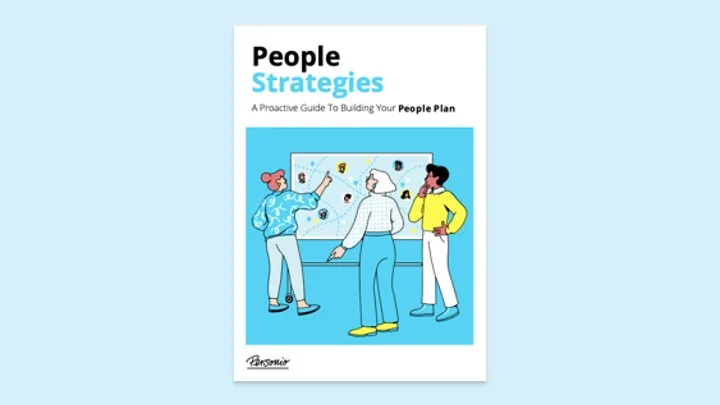5 Conflict Management Models: Pros and Cons For Each

In this article, we will describe the pros and cons of several conflict management models. With this information on hand, you can choose the exact model that would be best for your organisation or the specific situation within it.
Key Facts
The end goal of conflict management is to find the least damaging solution for the company. This can mean both parties don’t get everything they want in a negotiation.
There are several conflict management models and there are situations where one may be more effective than the others.
Managers must decide on a solution after gathering all the information they can on the situation at hand.
What Is Conflict Management?
Conflict management refers to how you resolve disputes within the workplace. This involves finding a compromise between the conflicting parties that minimises negative consequences and maximises positive outcomes.
What Are the 5 Conflict Management Styles?
No matter what measures are taken to prevent conflict, it’s likely you’ll run into it when dealing with a large group of different personalities and beliefs. There are several conflict management methods to choose from, each of which can be put to work in your organisation. You can use each one depending on the situation or build a robust conflict resolution policy out of one or two.
1. Avoiding Conflict Model
Because most people naturally want to avoid conflict, they tend to gravitate toward the avoiding conflict management style. Avoidant people withdraw from the brewing conflict altogether in the hope that it will resolve itself over time.
Advantages | Disadvantages |
|---|---|
* Sometimes, the argument does peter out by itself. * It’s also good as a temporary measure to give you more time to think of a more appropriate response. | * Letting a problem simmer for too long can lead to it boiling over into something more damaging. * Additionally, if a manager avoids conflict, it can build the perception that they don’t care enough to help resolve it, potentially damaging morale. |
What’s the Best Way To Use the Avoiding Conflict Model?
Use this style if adding your voice to a conflict won’t actually help resolve it faster. However, encourage its use in moderation because it can damage an employee’s growth prospects in an organisation if it’s relied upon too much.
2. Accommodating Model
The accommodating model requires that one party immediately concedes to the other’s arguments, often setting aside their own issues in order to keep the peace. People who use this method are often more passive in the workplace and more focused on pleasing people than getting their own way.
Advantages | Disadvantages |
|---|---|
* Accommodation can result in a deeper understanding of the other person’s viewpoints. It also keeps conflict from escalating. | * A solution agreed to just to keep the peace might lead to one party resenting the other, potentially leading to further problems down the line. |
What’s the Best Way To Use the Accommodating Model?
The accommodation model should be used when you’re admitting that you were wrong about something. It’s also best used when winning the argument causes more harm to a working relationship than good.
3. Competing Model
The competing conflict management style is one where one party forgoes any compromise with the other party and stands firm in their opinion until they get their way. This method of settling an argument is inherently aggressive and has no regard for future working relationships.
Advantages | Disadvantages |
|---|---|
* Competing doesn’t leave room for argument, so it can solve conflict faster than other resolution methods. | * Stubbornness towards a specific solution doesn’t mean it’s the right one. * Not allowing people to argue their case may also lower morale and create a negative work environment. |
What’s the Best Way To Use a Competing Model?
The competitive conflict management style is best used when a fast decision needs to be made to charter a course of action. It’s similarly useful when leadership has to make an unpopular choice.
4. Compromising Model
The compromise model is used when both parties in an argument negotiate their terms and agree to certain points in return for gaining some of what they want. It’s one of the healthiest ways to settle disagreements within an organisation.
Advantages | Disadvantages |
|---|---|
* Compromise helps end the conflict quickly while maintaining a working relationship. It helps ensure that everyone walks away with something they are happy with. | * Compromise doesn’t necessarily mean finding a solution that makes everyone happy, just the fairest one possible. It’s also possible for an agreement to not make much business sense. |
What’s the Best Way To Use the Compromising Model?
It’s best to use the compromise model when trying to win would cause more damage to working relationships than good. A compromise is commonly reached after a period of debate outlines what both parties want as part of the solution.
5. Collaborating Model
A collaborative conflict management style is similar to compromise, except both parties come to understand each other’s viewpoints and then agree to a partnership. Nothing is given up. Instead, the participants combine their goals and move forward to accomplish them both.
Advantages | Disadvantages |
|---|---|
* Collaboration tends to produce the most creative solutions for a joint problem. * It also fosters strong relationships between employees as they work together to achieve their goals. | * It takes longer to resolve the conflict and some people might not think the time and effort are worth it. |
What’s the Best Way To Use the Collaborating Model?
A collaborative approach to conflict resolution is best used when the two disagreeing parties are on the same power level. Additionally, trust is necessary for the arrangement to work effectively.
5 Steps To Manage Conflict in the Workplace
Regardless of the conflict management style you use, there are several key steps involved to maintain good employee relations.
1. Listen to Employees
Even if a conflict gets out of hand, it’s important to remain calm and hear both sides to get the full story. Not taking the time to listen to your employees during a tense situation could lead to decisions that don’t resolve it, but only delay it. Emotions may run high during conflict, so getting a coherent picture of the incident may be difficult at first. But a little patience and gathering accounts from multiple people will eventually get you as many details as possible.
2. Stay Objective
Showing bias during a conflict can lead to resentment from one of the parties involved. Any resolution reached in that scenario is more fragile because the other side may feel they were pressed into an agreement by their manager. As a result, the conflict can simmer under the surface and appear again at a less opportune time.
3. Investigate Properly
It’s important to gather as much information as possible before making a judgement on the conflict. Since personal accounts are often influenced by bias, you’ll need to break up the initial disagreement and schedule one-on-one meetings with the main participants as soon as possible. Neutrality is also key to any investigation because either party might stop sharing their point of view if they feel you’ve already made a decision.
4. Find a Solution
Using the information you gather, attempt to find a solution that satisfies both parties or ensures the issue doesn’t arise again. Finding an answer that makes everyone happy is not always possible, so creating one that keeps your organisation productive is the next best option.
5. Review and Evaluate
After coming up with the solution, check in with both parties some time after the fact to ensure that the issue is resolved. If not, investigate the problem again to devise a more effective solution. If the problem has been dealt with, use your knowledge of the situation to plan how to avoid similar situations in the future.
Frequently Asked Questions About Conflict Management
What Is Conflict Management?
Conflict management is the process of resolving a conflict between two parties with a solution that causes the least disruption to your organisation.
What Are the Causes of Conflict?
The most common factors that cause conflict in the workplace include:
Miscommunication. Given the amount of time that employees and managers spend communicating with each other, misunderstandings are inevitable. Conflict often occurs when two people receive the same instructions but do different things.
Poor Management. A workforce is made up of various temperaments and it’s the management’s job to keep them from butting heads. Keeping a distance from your employees increases the risk of conflict cropping up.
A Bad Work Environment. Work environments can be competitive, but if toxic competition is encouraged, it often leads to unproductive conflict.
Unfairness. Conflict can occur if employees aren’t recognised for their work on a project and most of the credit goes to the project lead. This one tends to start as an internal struggle before eventually making itself known externally.
What Are the 5 Conflict Management Models?
The five conflict management models are as follows:
Avoiding: You withdraw from a conflict, hoping it will resolve itself in time.
Accommodating: You agree with the other party’s point of view to keep the peace, forgoing your own arguments.
Competing: You dig your heels in and advocate for your solutions before anyone else, refusing to entertain any alternative points of view.
Compromising: You and the other party each give up some of what you want so you can both gain a little of what you want.
Collaborating. You and the other party stop arguing, working together to achieve both goals for the company’s benefit.
How Can Managers Resolve Conflict in the Workplace?
Managers can resolve conflict by picking the conflict management style that best fits the conflict at hand. From there, they should:
Listen to each party, remaining calm to avoid making snap decisions.
Stay objective while they resolve the situation. This avoids bias-led decisions that can potentially escalate a problem.
Investigate the conflict thoroughly and get all the information you can to find the best solution possible.
Find a solution that makes both parties happy. If that’s not possible, find one that ensures that the problem can’t happen again.
Review and evaluate the solution over time to ensure it’s working as intended. Then, devise plans that keep the conflict from happening again in the future.
Is Collaborating the Best Conflict Management Style?
Collaboration isn’t the best method for every conflict, but it often leads to the best outcome for an organisation. Drawing two conflicting parties together to work towards each of their goals can make both parties more productive overall.
What Impact Can Unmanaged Conflict Have on the Work Environment?
If conflict is left unresolved, it can lead to a lack of trust and collaboration among the workforce. This builds a toxic work environment that strains employee morale, lowers the effectiveness of teamwork and potentially increases employee turnover.
Is Conflict Always Bad?
Conflict is bad when it affects employee morale and productivity, but it can also be a positive force within the workplace. If carefully controlled, disagreements can motivate your workers to learn new skills, develop new ideas and foster more creative solutions to complex problems.
Better Manage Workplace Disagreements with Personio
Resolving conflict at work is often an uncomfortable task for leadership and can be time-consuming if done correctly. Personio helps make the process easier by minimising repetitive administration to make way for more effective problem-solving. Book your free demo to learn how Personio can help your organisation focus on what matters.
Disclaimer
We would like to inform you that the contents of our website (including any legal contributions) are for non-binding informational purposes only and does not in any way constitute legal advice. The content of this information cannot and is not intended to replace individual and binding legal advice from e.g. a lawyer that addresses your specific situation. In this respect, all information provided is without guarantee of correctness, completeness and up-to-dateness.


